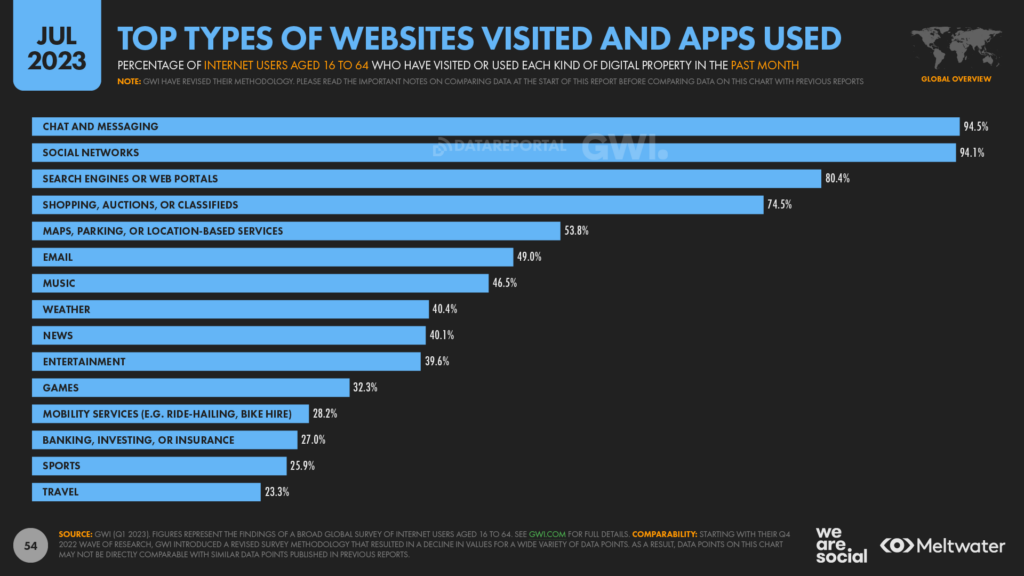The 169th Block: Pseudoconnection
The Internet connects societies; it highlights societal disconnects.
This week…
Your reading time is about 6 minutes. Let’s start.

Remember in “The 163rd Block,” I reminisced about Internet cafés? Well, the Rest of World team must have had the same thought because this long read is truly a walk down memory lane, especially if you are from Uganda, Nepal, Nigeria, Mexico, Argentina or Hong Kong.
And now, a selection of top stories on my radar, a few personal recommendations, and the chart of the week.
ICYMI: The Previous Block featured stories on digital authoritarianism. CORRECTION NOTICE: None notified.NUJ has ‘grave concern’ over AI-generated story on refugees published by regional news group
Diarmuid Pepper for The Journal:
The article, with the headline, “OPINION: Should refugees in Ireland go home?”, was published by Iconic Media’s digital titles. Its byline – a line at the top of an article that usually gives the author’s name – said “AI Generated”.
A disclaimer at the top of the article stated: “NOTE: This article was written by ChatGPT – an artificial intelligence chatbot.
“It was asked: Should refugees in Ireland go home?”
Around lunchtime, the headline of the article was updated to state ”Can we trust Artificial Intelligence?”.
The disclaimer was also updated to include: “Here is an example of a piece of content powered by AI. We’d be interested to hear your views.”
However, the text of the article remained the same.
As Charles Arthur wrote in The Overspill, “Some really stupid decisions get made inside newspapers, but this one is astonishing. Again, it must have gone through at least three levels – someone commissions it, someone does it, someone sub-edits it (and maybe puts it on the site). And nobody said, ‘Errrr..is this.. you know.. wise?’”
Amid Indian nationalism, pseudoscience seeps into academia
Arbab Ali and Nadeem Sarwar for Undark:
Many experts have tied the rise of pseudoscience in India to the Bharatiya Janata Party, a right-wing political party that came to power in 2014, when Prime Minister Narendra Modi was elected. Members of the party have repeatedly amplified scientific falsehoods — for instance, that cow urine can cure cancer, or that ancient Indians invented the internet.
“It is clear that the government is propagating this sort of pseudoscience,” said Soumitro Banerjee, an engineering professor at the Indian Institute of Science Education and Research in Kolkata.
Such claims often tout the superiority of traditional knowledge over modern science and cite ancient Hindu texts as evidence. In recent years, they have leapt over to academic circles.
In 2019, for example, G. Nageswara Rao, then vice chancellor of Andhra University, said that the Kauravas — who appear in the Hindu epic Mahabharata — were born of “stem cell and test tube technology.”
More recently, news came out that Laxmidhar Behera, director of the Indian Institute of Technology Mandi, once claimed to have performed an exorcism with holy chants. When asked about the experience, Behera later told the newspaper The Indian Express, “Ghosts exist, yes.”
If ghosts exist, they are powerless, and exorcisms are unnecessary. Otherwise, all the ghosts of the oppressed would have dealt with their tormentors, and we won’t have so many descendants of colonialists and oppressors still out and about messing around with our lives. They are the real terrors.
The true cost of science’s language barrier for non-native English speakers
Mariana Lenharo for Nature:
[Tatsuya Amano] and his colleagues also examined the peer-review process. Non-native English speakers reported having their papers rejected specifically because of writing issues 2.5 times as often as native speakers. That sounds familiar to Lina Pérez-Angel, a Colombian palaeoclimatologist at Brown University in Providence, Rhode Island. “I have had reviewers that explicitly said that my English puts in doubt the quality of the research, or mostly gave me feedback on my English in a harsh way that made me think it was based on my Latinx/Hispanic-sounding last name,” she says.
And the challenges are not limited to papers and presentations, says Paula Iturralde-Pólit, an Ecuadorian ecologist at the University of Costa Rica in San José. “It’s in every step in the process of becoming an academic,” she says.
What I read, listen, and watch…
I’m reading a paper examining whether Facebook enabled ideological segregation in political news consumption by Sandara González-Bailón et al., published in Science.
I’m listening to NPR’s Planet Money, hosted by Nick Fountain and Jeff Guo, about a couple of dishonest honesty researchers. The whispers around Dan Ariely and Francesca Gino fabricating their research data have been going on for a while now. But it is so loud now.
I’m watching Class of '09, a miniseries on the US criminal justice system getting too comfy with the use of AI.
Other curious links:
“What AI teaches us about good writing” by Laura Hartenberger for Noema.
“Why some publishers don’t think Apple’s iOS17 update will impact their link tracking in newsletters” by Sara Guaglione for Digiday.
“BBC apologises for reporter’s ‘inappropriate’ question to Morocco women’s team captain” by Matias Grez for CNN. What did I say last issue about this saviour complex?
“Yellowknife's Cabin Radio uncertain what Canada's Online News Act will do to its business” by Natalie Pressman for CBC.
“La inteligencia artificial entra a las campañas electorales: ¿cómo impactará en Latinoamérica?” por Antoni Gutiérrez-Rubí en El País.
« Le sport extrême de Pascale St-Onge » par Konrad Yakabuski dans Le Devoir. La politique est un sport extrême.
Chart of the week
According to the Digital 2023 July Global Statshot Report, published in partnership between We Are Social and Meltwater, social media users reached a new milestone: 4.88 billion distinct user identities accessed social media platforms over the past 30 days, representing 60.6 per cent of the world's total population.
Kepios founder Simon Kemp with the written report on We Are Social:
It’s important to stress that this 4.88 billion figure doesn’t necessarily represent unique individuals, because active user identities likely include a number of duplicate and false accounts, as well as accounts that represent “non-human” entities such as businesses, pets, music bands, and the like.
However, with messaging platforms and social networks still the primary destinations for the world’s 5.19 billion internet users, the comparison between active user identities and population still provides a reliable benchmark for social media use.

The report is extensive and worth the read. Another set of data showed that movies and TV streaming is the most popular form of paid digital content, with 31.8 per cent of Internet users between the ages of 16 and 64 saying that they paid for one of these services in the past month, compared to music streaming (23.8 per cent) and music download (17.4 per cent) at second and third.
And one more thing
Payal Dhar wrote about the colonisation of arts by generative AI use on Open Mind.





So what's the answer to the poll? Haha. I think different sources will give different "correct" answer!
It's fascinating to see how the internet connects societies while also highlighting disconnects.